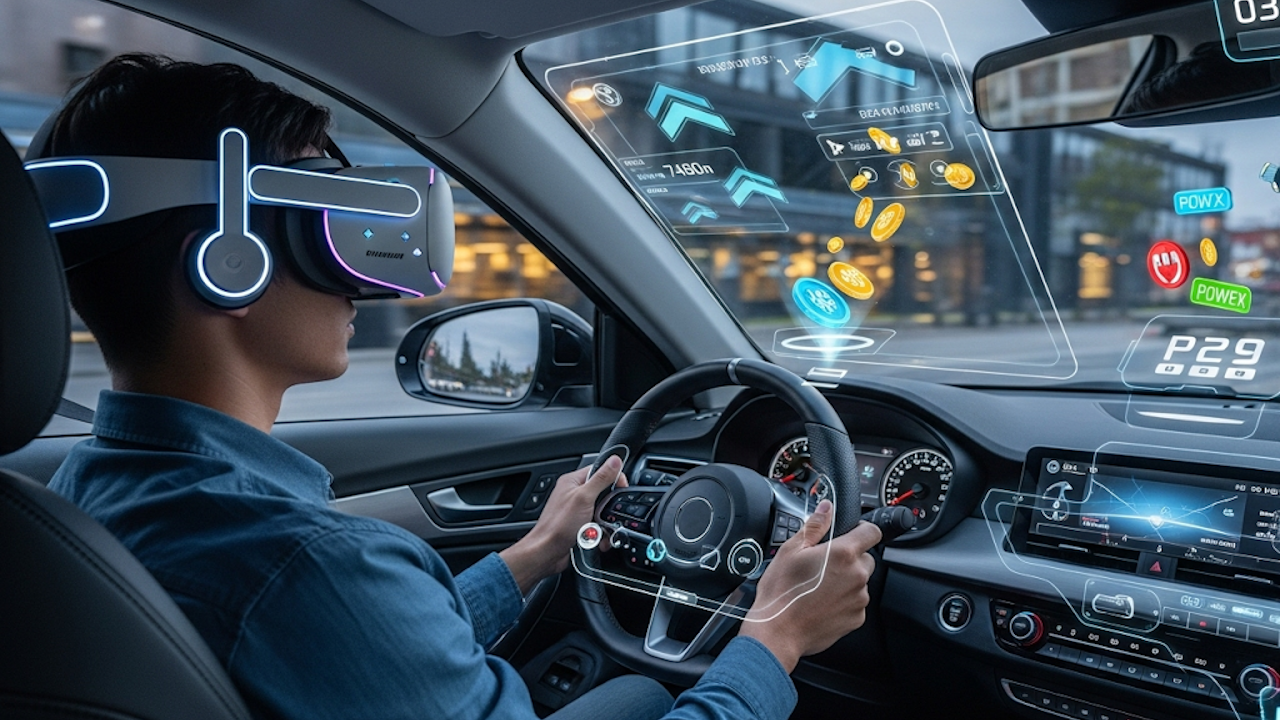In-car entertainment has evolved dramatically over the past few decades. From simple AM/FM radios to CD players, touchscreen displays, and streaming services, vehicles have long been outfitted with technologies designed to keep drivers and passengers engaged. Today, a new frontier is emerging. Virtual Reality (VR) and Augmented Reality (AR) are beginning to reshape how people interact with vehicles and how entertainment is experienced on the road. These technologies are no longer confined to gaming headsets or smartphone apps. They are entering vehicles in ways that promise to transform the passenger experience, support safer driving, and create entirely new opportunities for content creators and automakers.
The Rise of Augmented Reality in Driving
AR has made the fastest leap into mainstream automotive applications because it can be integrated directly into driver assistance systems. Many modern vehicles now include AR heads-up displays that project information onto the windshield. Instead of glancing down at a dashboard, drivers see navigation cues, speed indicators, and hazard alerts overlaid on the road ahead. These overlays reduce distraction while enhancing situational awareness. For example, instead of a simple arrow on a screen, the display may project a virtual path onto the actual street, guiding drivers through complex intersections.
AR is also being used to improve passenger experiences. Some luxury carmakers are experimenting with AR-enabled entertainment windows. Passengers could point a tablet or AR glasses at the scenery outside, triggering educational overlays. A child looking out the window might see information about landmarks or wildlife. Road trips could become more interactive, blending the real landscape with contextual digital content.
Virtual Reality as a Passenger Entertainment Platform
While AR integrates with the outside world, VR creates entirely new ones. VR headsets are not intended for drivers but for passengers who want to immerse themselves in an alternate environment during long journeys. A backseat passenger could wear a VR headset and be transported to a movie theater, a concert hall, or a fully interactive game world. The motion of the car can even be synchronized with the VR environment to reduce motion sickness and create a more believable experience. For example, if the vehicle turns left, the VR simulation could mirror that motion in a spaceship or roller coaster.
Startups and large automakers are experimenting with what this might look like. One company has demonstrated a system where passengers play a space game in VR, with the car’s movements influencing the gameplay. The VR world adapts in real time to the car’s speed and direction, turning a long commute into an immersive adventure.
Balancing Safety and Entertainment
The integration of VR and AR into vehicles raises questions about safety. While AR is designed to support drivers with more information, there is a risk that too many visual overlays could create clutter. Automakers need to design AR interfaces that are clear, minimal, and focused on critical information rather than novelty.
With VR, the concern is less about the driver and more about passengers. Wearing a headset in a moving vehicle can sometimes cause discomfort or disorientation. Developers are working on reducing motion sickness by ensuring VR environments align with the car’s real movements. Automakers must also ensure that VR entertainment does not distract the driver. Ideally, VR systems should only activate in passenger seats and be disabled for anyone behind the wheel.
Opportunities for the Automotive and Entertainment Industries
The blending of VR and AR with in-car experiences opens new business opportunities. Car manufacturers can differentiate themselves by offering premium entertainment features. Entertainment companies, meanwhile, can develop VR and AR content tailored for automotive use. Imagine exclusive VR films that can only be experienced during car travel or AR apps designed for educational family trips.
This crossover could also reshape mobility services. Ride-sharing platforms and autonomous vehicle fleets could offer VR and AR experiences as part of their packages. In a future where passengers no longer need to drive, entertainment will become a key selling point for mobility services. A commuter could use a VR headset to attend a virtual meeting, relax in a simulated spa, or explore a digital theme park while being transported to their destination.
Looking Ahead: AR and VR in Autonomous Vehicles
The most exciting potential for VR and AR in cars lies in the future of autonomous driving. When vehicles eventually become fully self-driving, everyone in the car will be a passenger. That will free up time and attention for entertainment. AR windows might turn an ordinary commute into an interactive sightseeing tour. VR could transform the interior of the car into anything from a sports stadium to a virtual workspace. The car itself will become a platform for immersive digital experiences.
This vision will require significant advancements in connectivity, hardware, and content design. High-speed internet connections will be necessary to stream VR content seamlessly. Headsets must become lighter and more comfortable for long trips. Content creators will need to design experiences that work specifically within the context of moving vehicles. These challenges are real, but the rapid pace of innovation in both the automotive and tech industries suggests they are achievable.
In-car entertainment has always adapted to new technologies, but VR and AR represent a fundamental shift. They offer more than just passive entertainment. They create immersive, interactive experiences that can make travel more engaging, educational, and enjoyable. Augmented Reality is already enhancing navigation and passenger interactivity, while Virtual Reality is poised to redefine how people spend time during long journeys. As vehicles become increasingly autonomous, the role of VR and AR will only expand, turning cars into mobile entertainment hubs. The road ahead is not just about getting from one place to another. It is about transforming the journey into an experience worth remembering.

